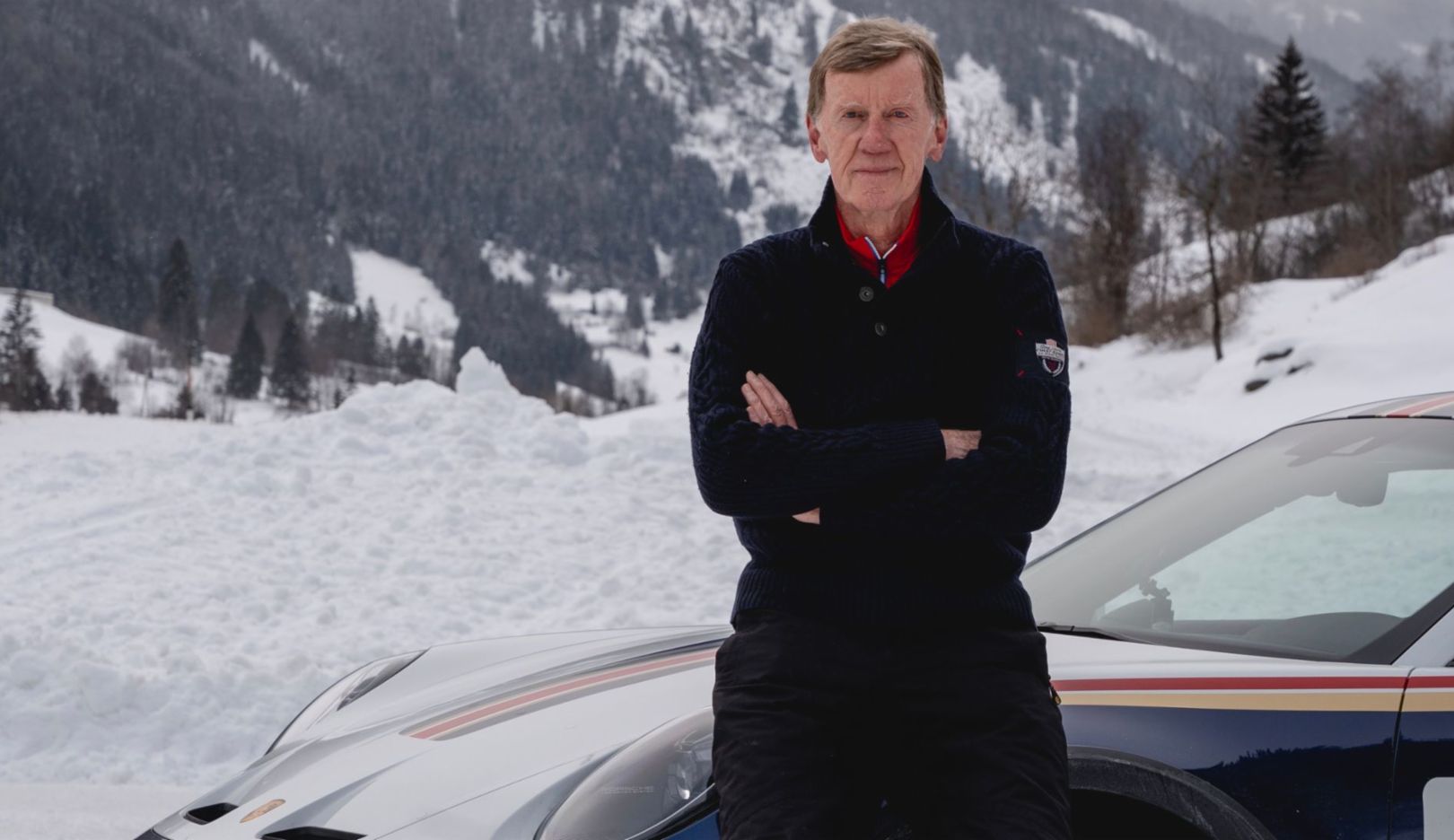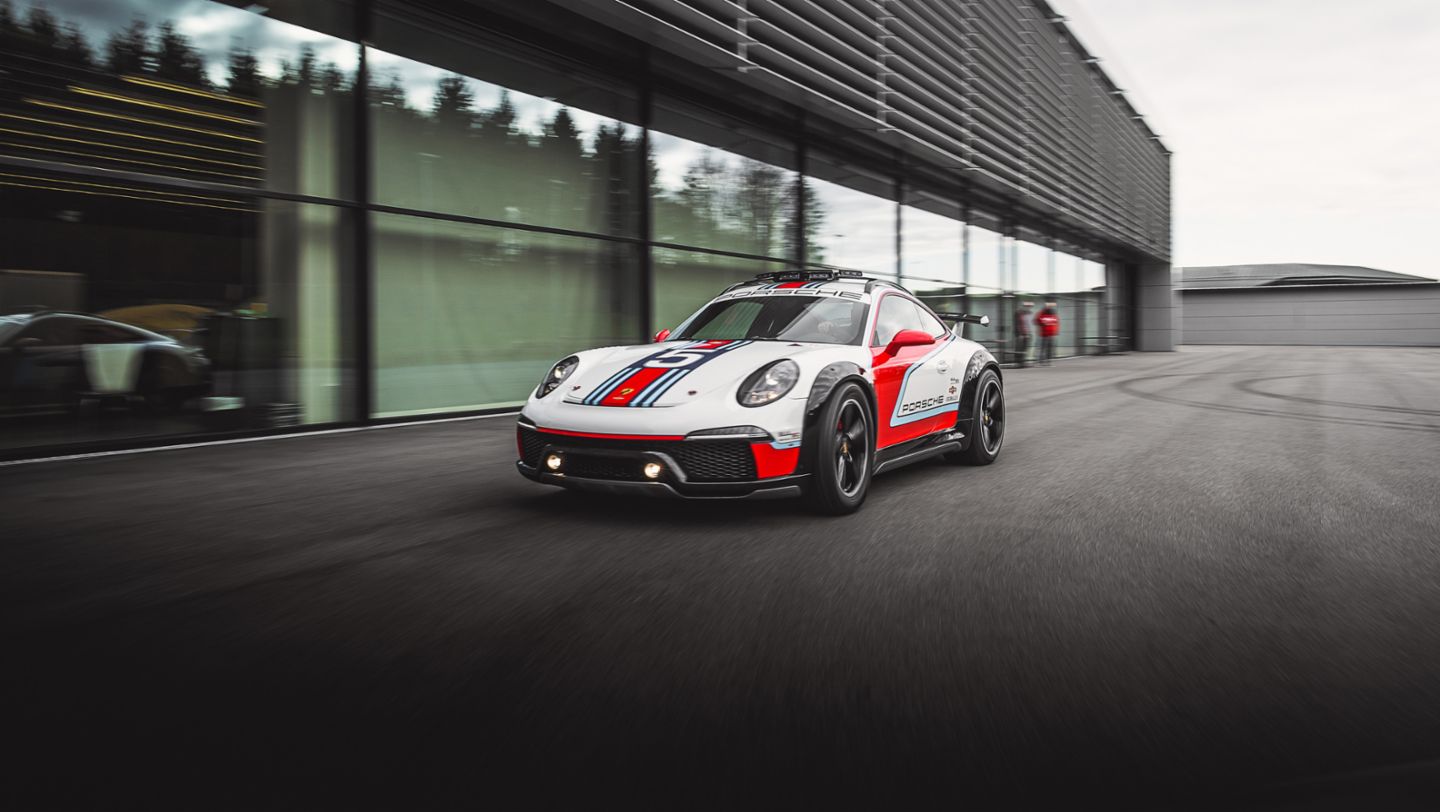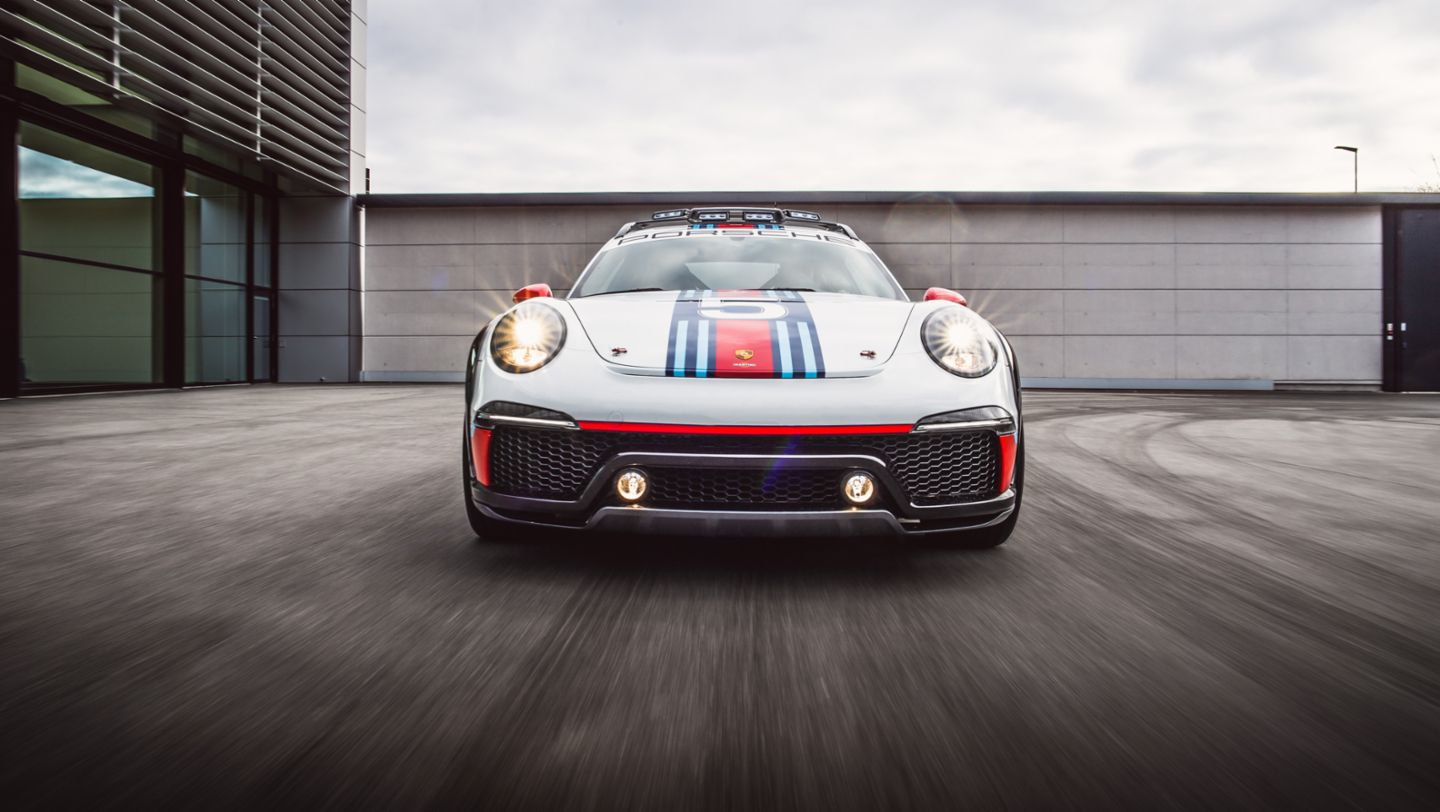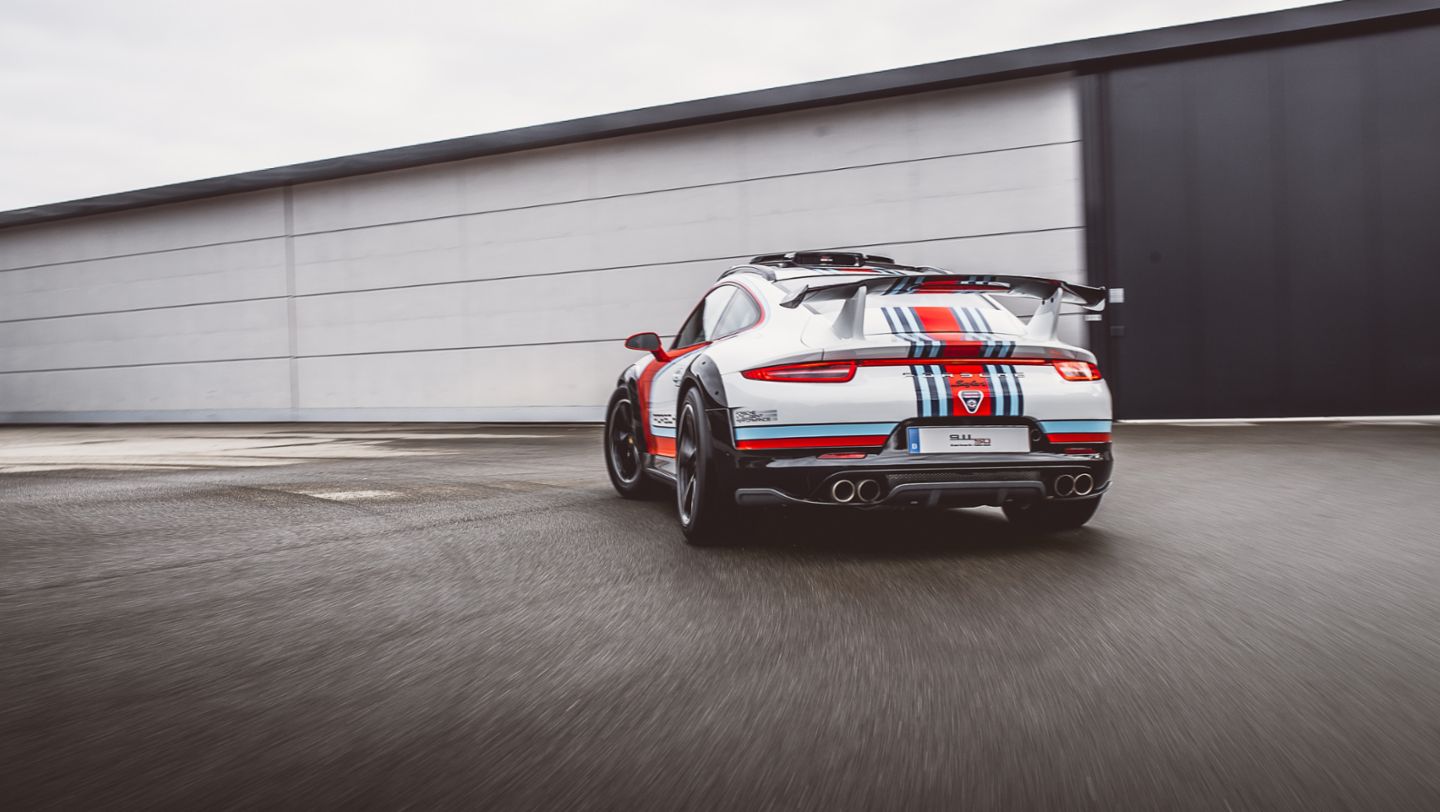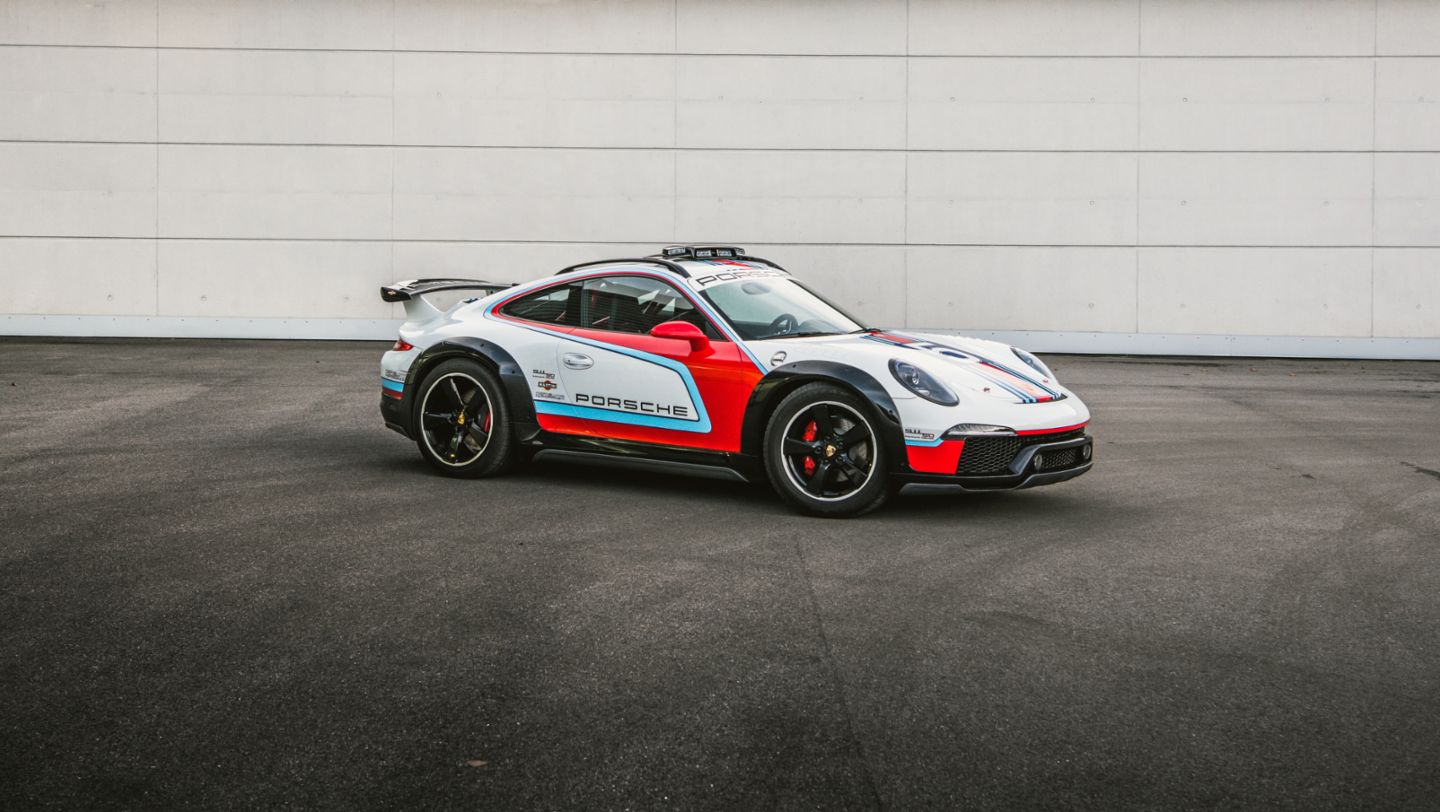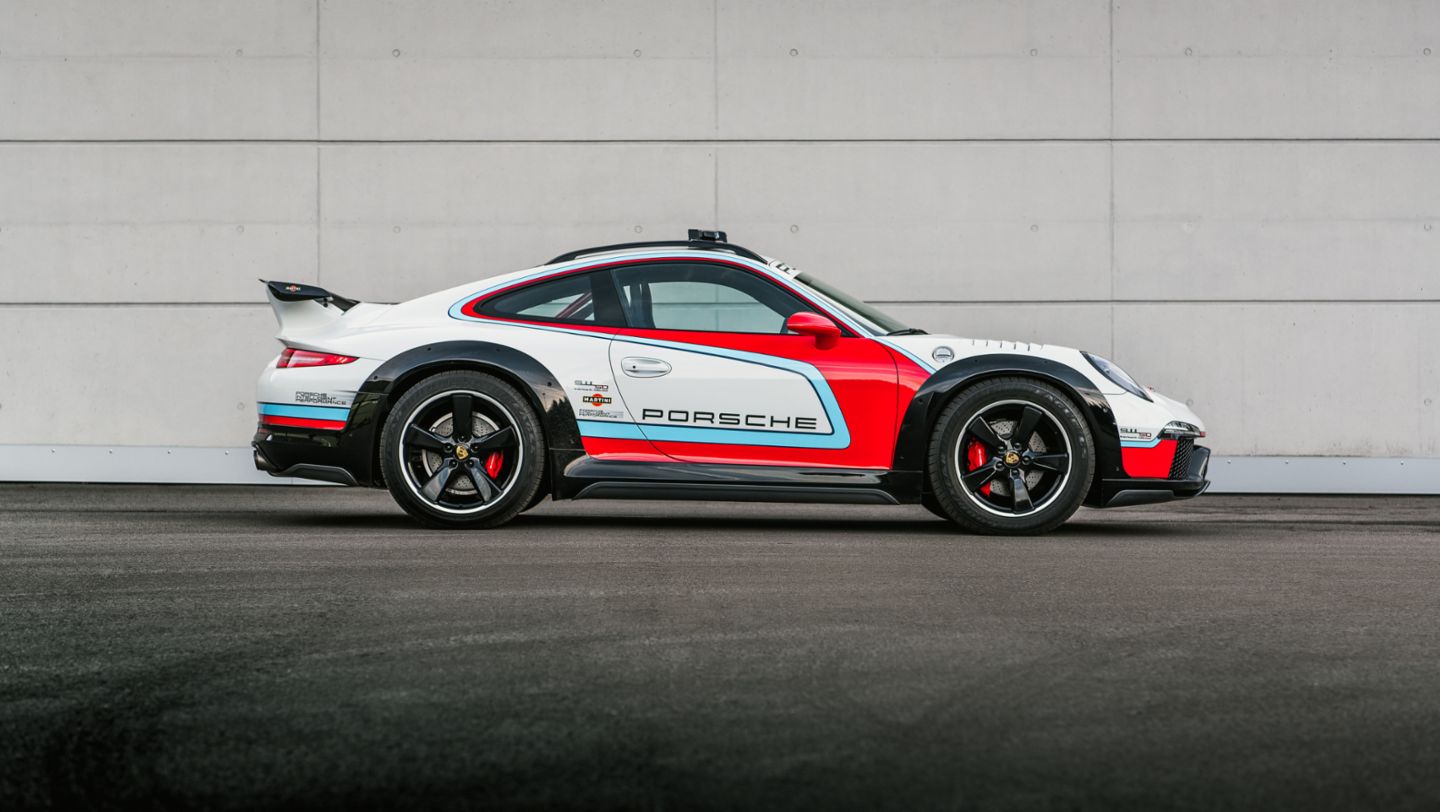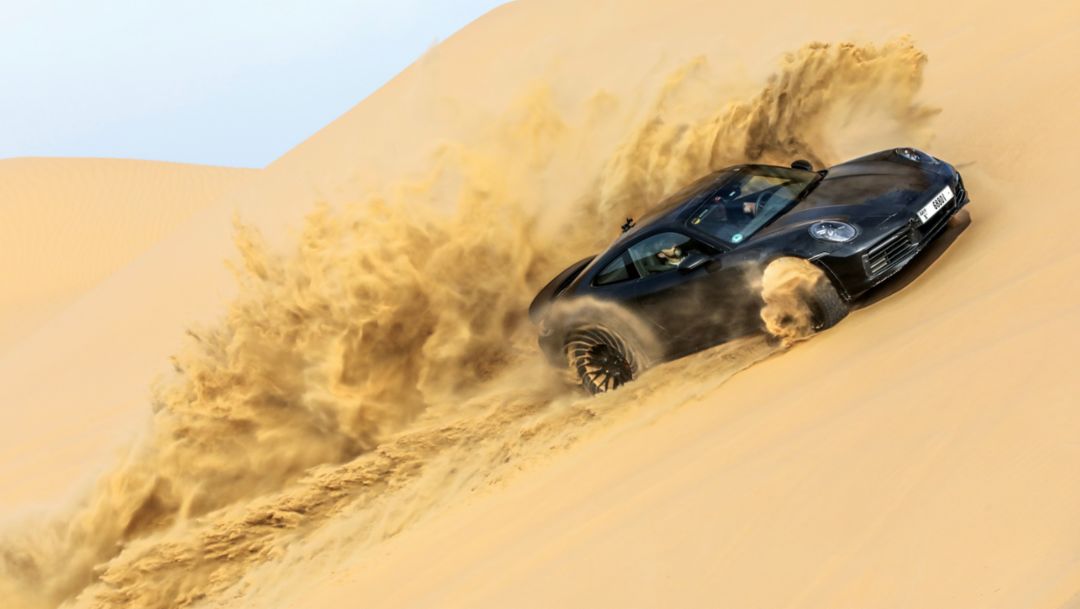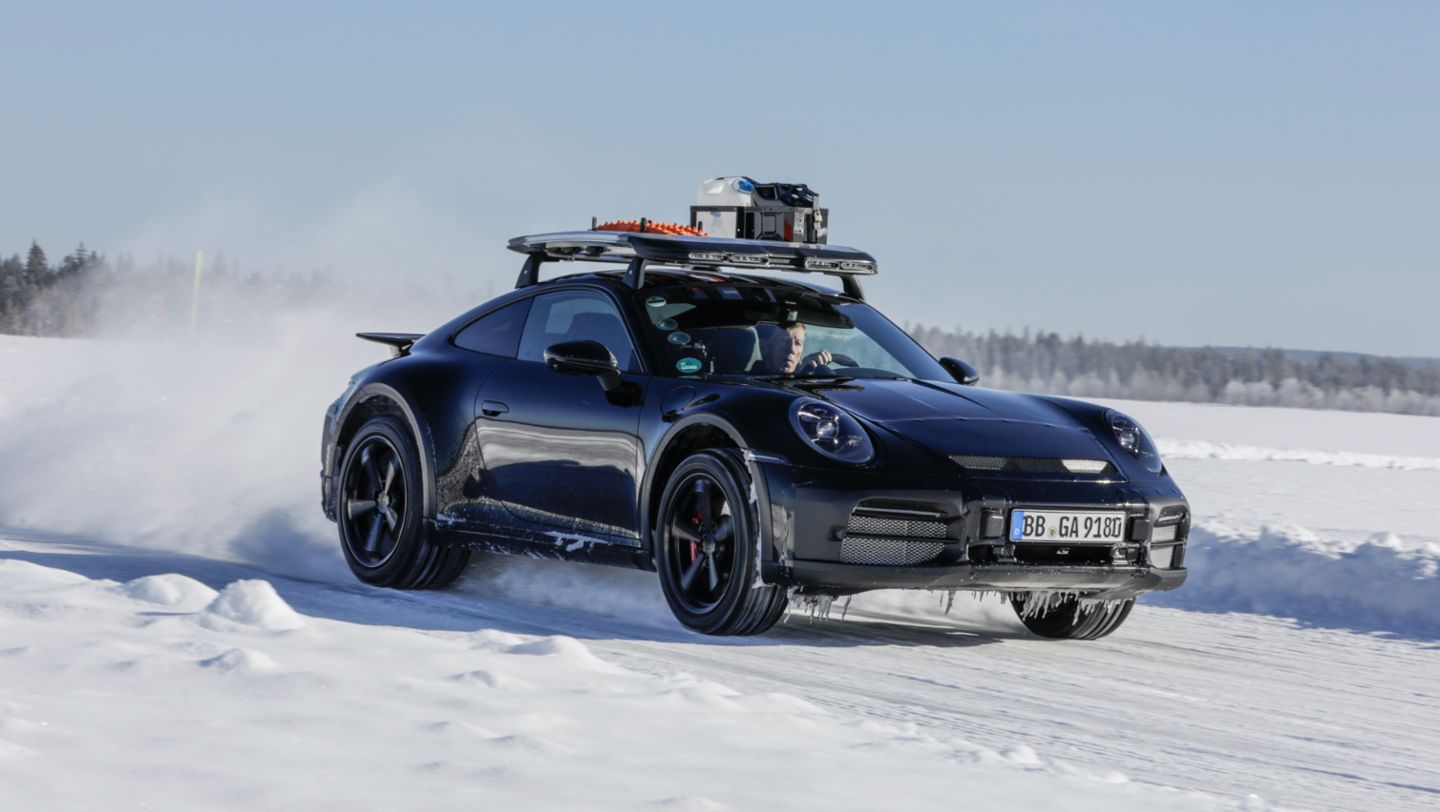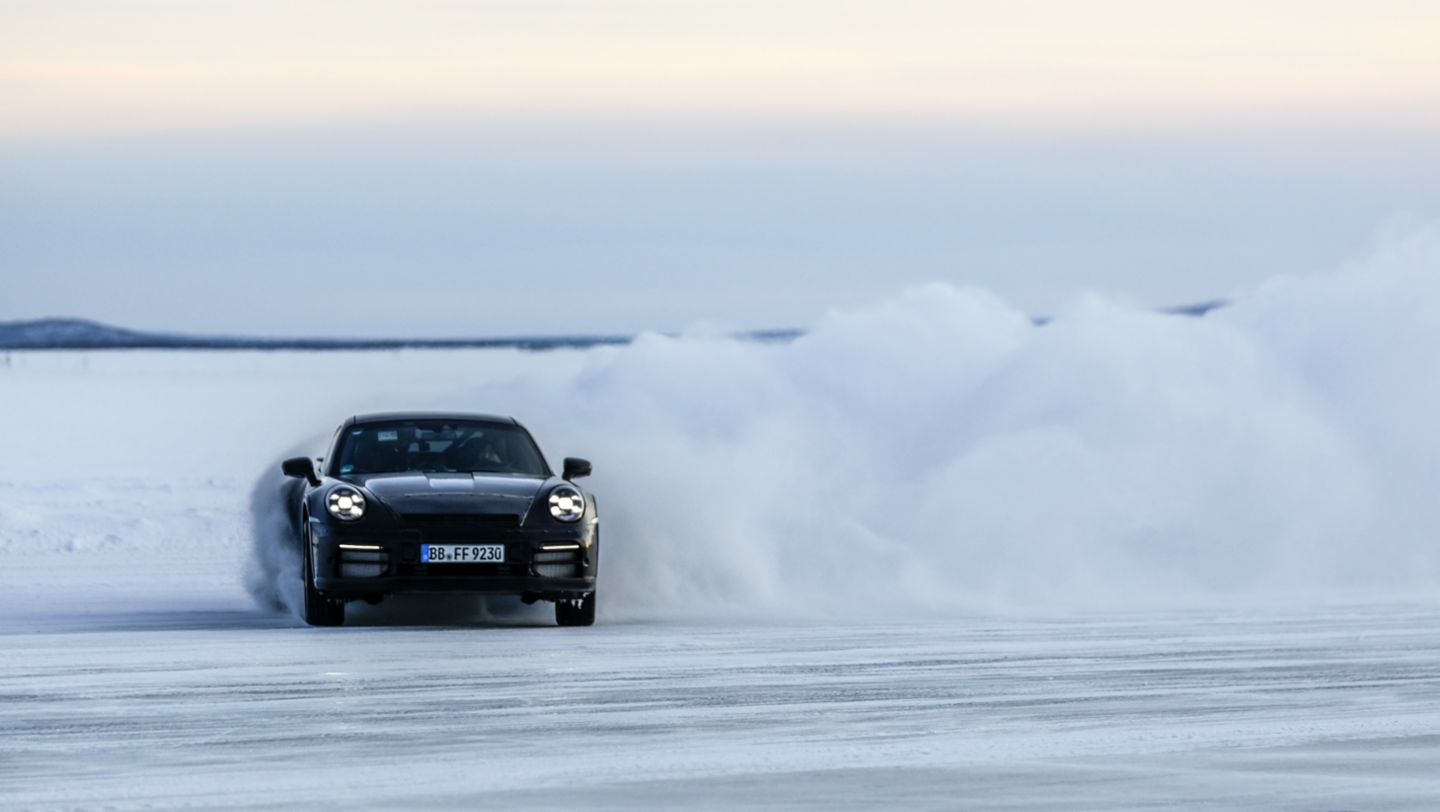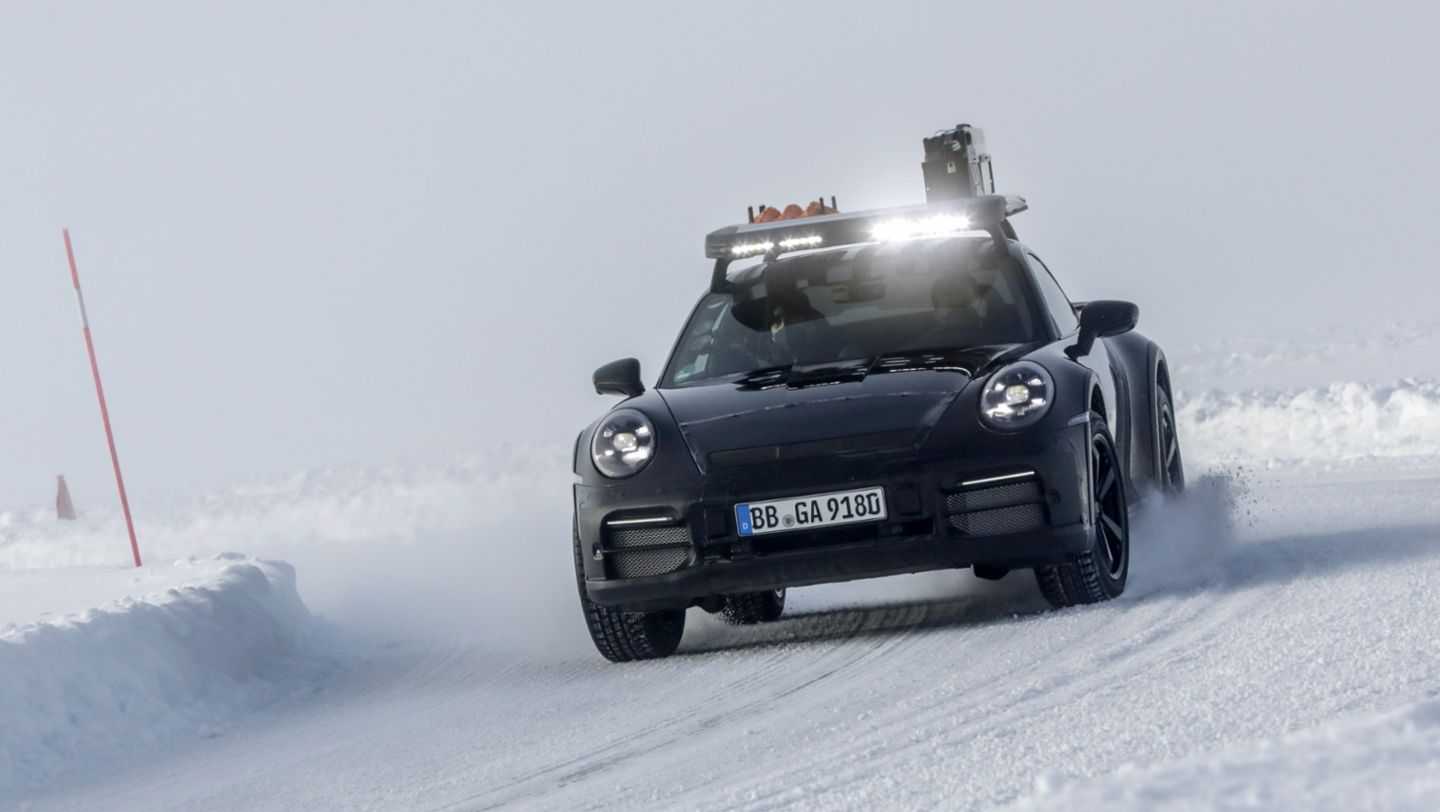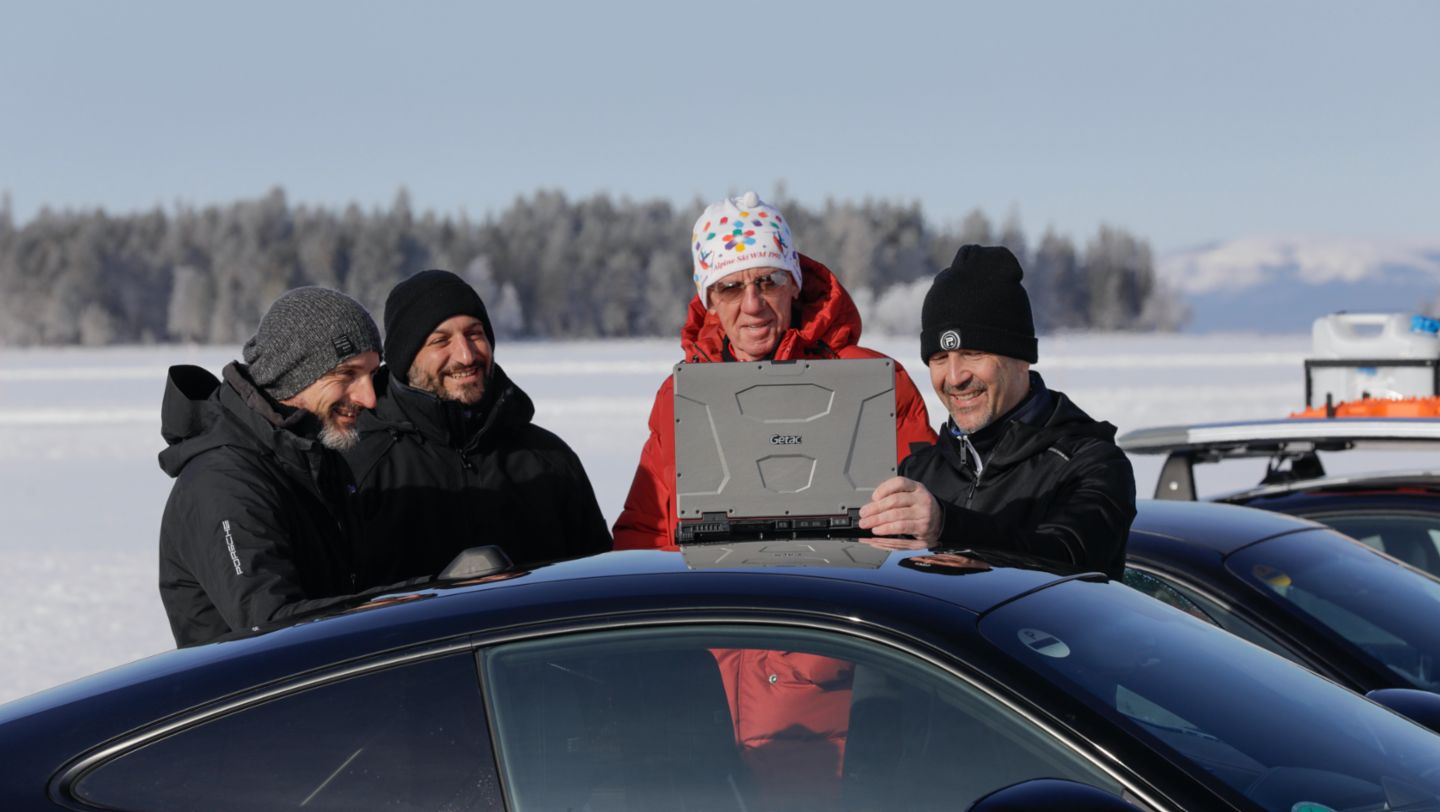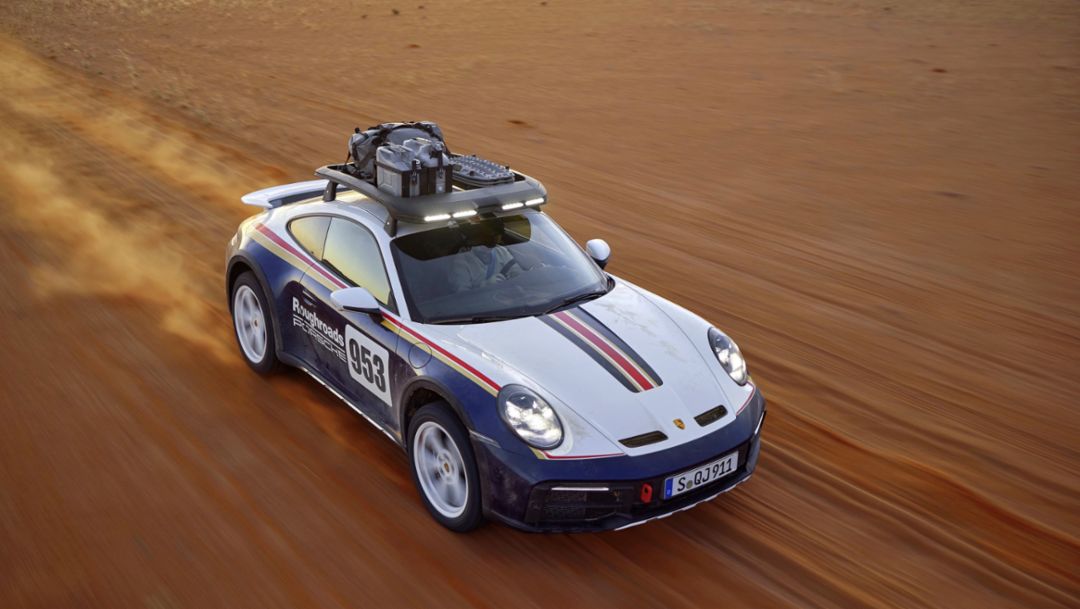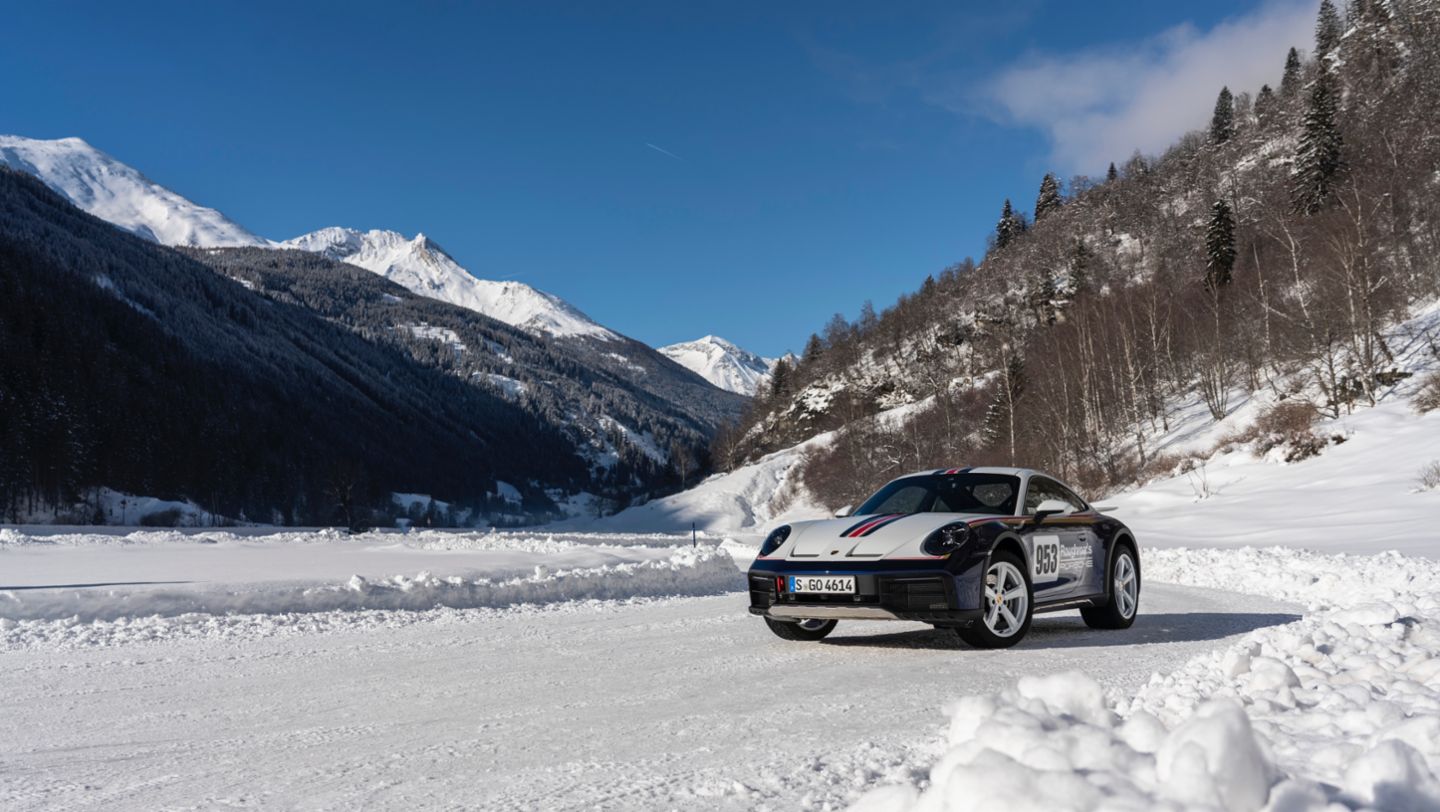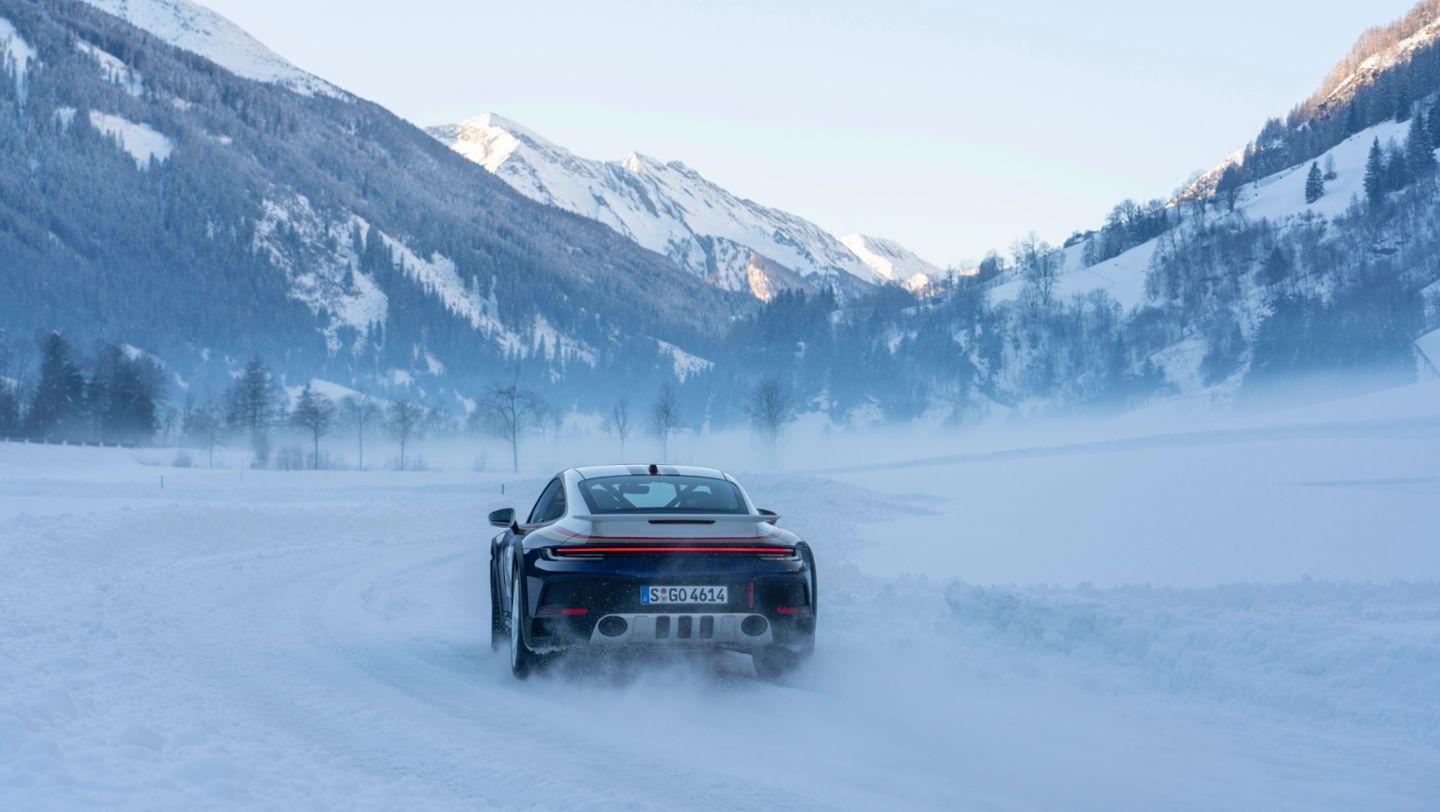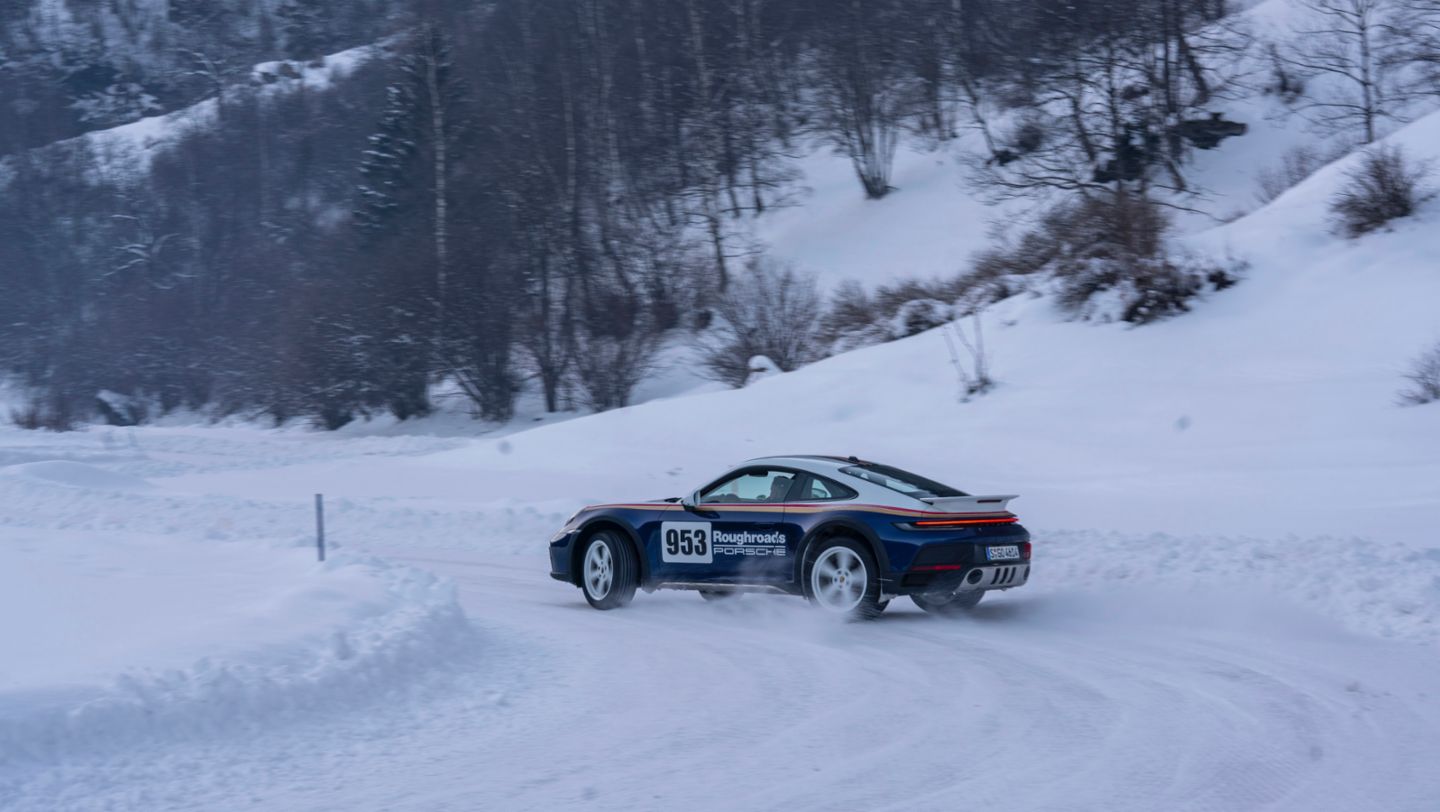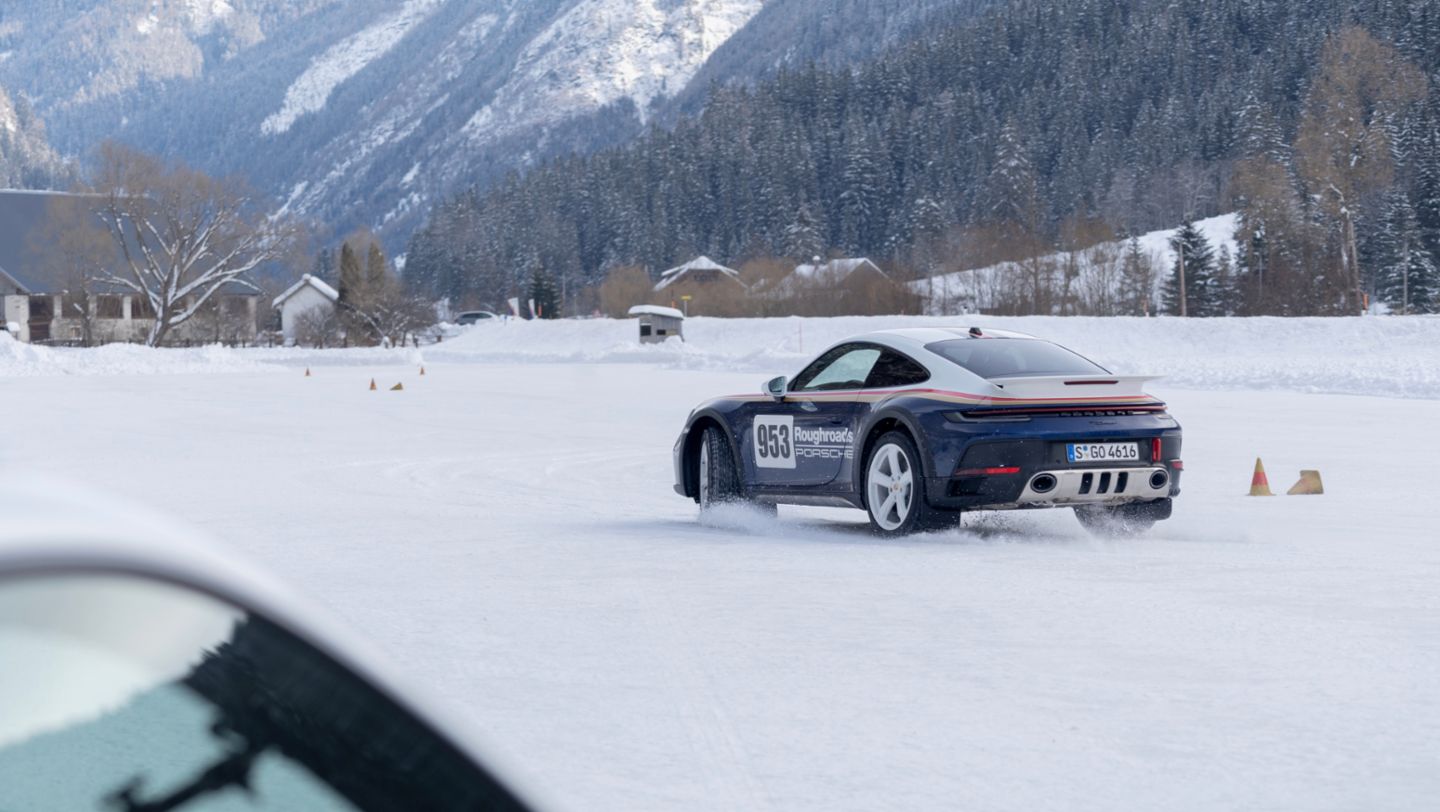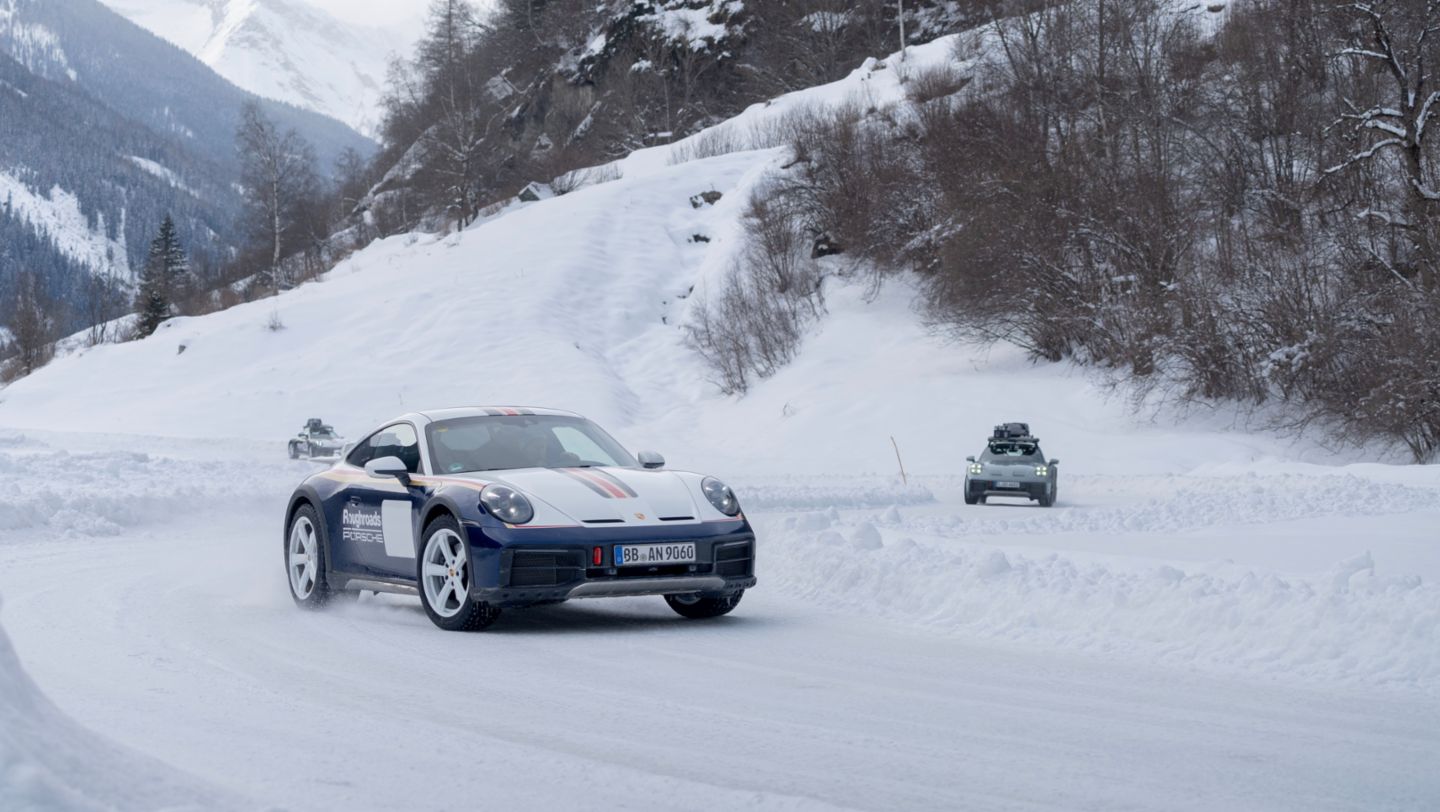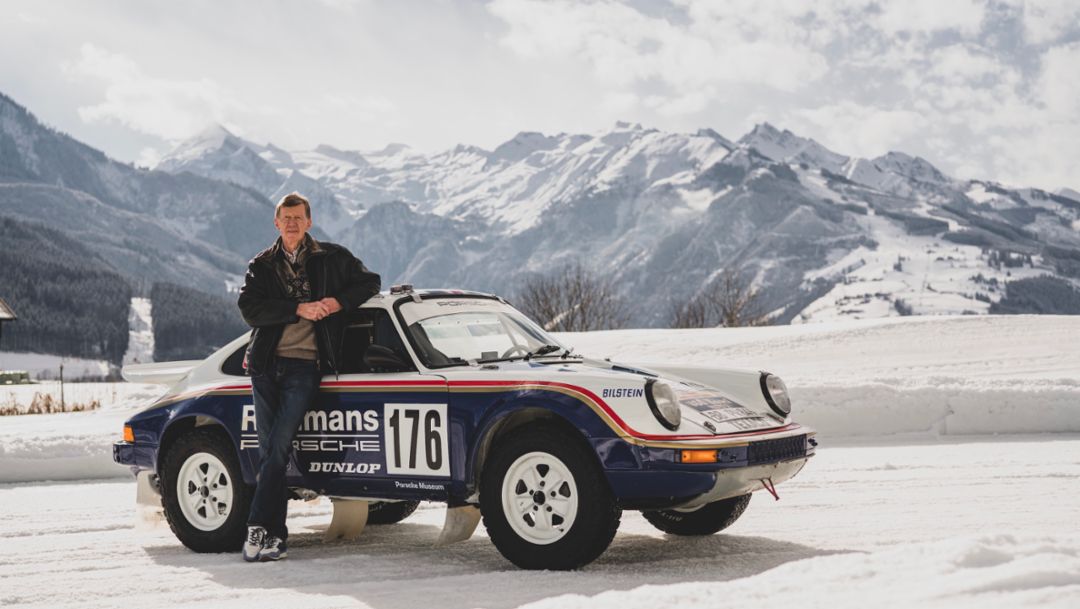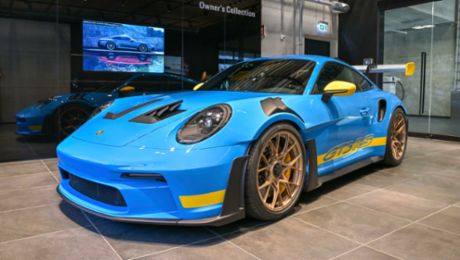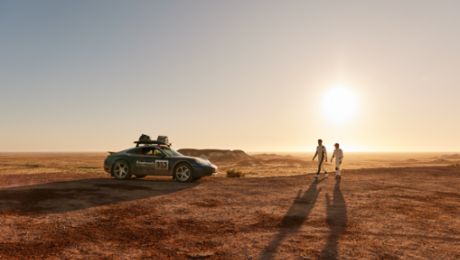In 2023, you will have been with Porsche for exactly 30 years. Is a raised 911 with off-road capabilities the craziest thing the developers have ever come up with?
Walter Röhrl: Yes, alongside the Cayenne (he laughs). Back then I thought, they’ve gone mad! But now you can see what an intelligent decision that was. It’ll be the same for the 911 Dakar. I’m just surprised it hasn’t come out sooner.
Why’s that?
Röhrl: Because I drove the first prototype on the off-road track in Weissach at least eight years ago. I was excited as a rally driver because it was a Porsche sports car that also drives really well on a loose surface.
That must’ve been the 911 Vision Safari from 2012, a study.
Röhrl: Exactly. With all-wheel drive and a naturally aspirated engine, the car was based on the 911 Carrera 4S.
And your first encounter with the 911 Dakar?
Röhrl: That was during the winter test in Sweden in early 2022.
Did you also try out the new ‘Rallye’ driving mode?nAnd can it stand up to a two-time world champion?
Röhrl: In principle, yes. First of all because the all-wheel drive is tail-heavier in the ‘Rallye’ mode, which prevents understeering and allows me to keep the car in a light drift. And second, releasing the accelerator leads to relatively strong engine braking at the rear axle. The car can therefore turn slightly into the bend, which can be quite helpful for an inexperienced driver if they want to drift. This system makes it very easy and lots of fun. Especially on loose surfaces.
You like to joke that you’d rather drive forwards than sideways. Still, drifting on bends is a standard practice for any rally driver. Why?
Röhrl: If you expect the tyres to develop lateral force on loose surfaces so you can round the bend faster, you’re mistaken. That’s why I begin drifting slightly as I enter the bend when competing in rallies on gravel, snow or sand. So that the front is facing the direction I want to go in. Then I can take advantage of the full power after the crest and turn the centrifugal force, which would usually cause the car to slide off to the side, into forward motion.
This is like a physics class. Do the engineers also learn from you?
Röhrl: I gave up regular testing two years ago, so I’m no longer there for every car. Porsche has enough good young people who can do that. Alongside the 911 Dakar project, I’m only involved with the GT cars at this point and drove the new GT3 RS three or four months ago. But to be honest, the cars are virtually in perfect condition, so all I can do is confirm that they’ve done a good job. And by the time I get in the car in the construction phase, all the mistakes have already been corrected.
There are videos that show you test-driving in Sweden. Despite the high speeds, your steering is calm, even restrained. Why do you do it like that?
Röhrl: Try pushing a car and then turning the steering wheel just ten centimetres in one direction. The car will come to an immediate stop. Driving resistance increases when you steer and intensifies tyre wear and petrol consumption. In fact, you should minimise steering for economical reasons. And excessive steering doesn’t make you go any faster, as anyone knows who has ever been skiing. A ski that slides sideways – forget about it. The ski needs to go straight, to glide.
And it’s the same for cars?
Röhrl: I’ve always had to fight against energy loss at the sides, as the car needs to move straight ahead. If there were just one secret to driving, it would be to steer as little as possible. It’s about lines, and you need to understand when to begin steering – early is better than late. I have a feeling for how to get by with less steering, which has been a large part of my success.
In many ways, the Porsche 911 is a classic – its technical principle with rear engine and rear-wheel drive is an important factor. But a lot of 911s with all-wheel drive are sold today. Are you OK with that?
Röhrl: Yes. Because turbo engines have enabled different powers entirely. And all-wheel drive increases safety for normal drivers. When it came to 911s with rear-wheel drive only, care had to be taken that steering wasn’t made too easy, otherwise the grip at the front axle would have caused the rear to slip out in the blink of an eye. If something goes wrong while you’re driving, the centrifugal force follows suit. There’s no question about that. That’s why the 911 used to be designed with understeering. That’s not necessary with all-wheel drive. You can push the limits of what’s possible physically, with less risk of the rear sliding out. I think that’s good.
It’s obvious you know what you’re talking about.
Röhrl: I also believe that I played a part in that. When the 993 Turbo was developed, it was initially only supposed to have rear-wheel drive. I said, ‘You people are mad. The car needs to have all-wheel drive.’ When you design a car for normal people, it needs to be done in good faith. And with all the power of a Porsche Turbo, all-wheel drive must be simple.
A GT3 also has a lot of power.
Röhrl: That’s right. But GT cars are for drivers who also get out on the racecourse. They know what they want, so rear-wheel drive is just fine. But a car with a powerful engine that’s driven every day should always have all-wheel drive.
You competed in a single world championship race with the 911, back then without all-wheel drive.
Röhrl: That was Rallye Sanremo in 1981 – with the last 911 that was actually built for world championship races. I was still hoping to convince Porsche to drive the complete World Rally Championship.
Even though Audi had already introduced the powerful Quattro?
Röhrl: Yes. 1981 was the first year in which Audi participated with all-wheel drive, but still the rear engine had the key advantage of better traction than all the other cars used in rally driving. That was also the case in Sanremo, which alternated between asphalt and gravel. I won everything the first day on asphalt. Then on gravel we fell behind Audi by a good two minutes. But we would’ve been able to make up for that easily the last night on asphalt.
Would have?
Röhrl: The driveshaft broke off. Four or five times in my career, I’ve had to drop out due to a broken driveshaft in the Porsche. To some degree, it was also the result of my driving style.
How do you mean?
Röhrl: The traction is very good, which significantly increases strain on the driveshaft. Especially if I’m driving in a way that maintains grip whenever possible and prevents the back from sliding out. The driveshaft has to absorb lots of lateral and driving force, which makes the car fast, but also increases the risk of breakdown. Nothing happened to the others, who were drifting all over.
So I guess you could’ve used all-wheel drive in the Porsche even back then.
Röhrl: Yes, that’s true.
This technology was introduced in the 911 for the first time in 1984. The car promptly won the Paris–Dakar Rally, which serves as inspiration for the new 911 Dakar. How is it that you – one of the greatest rally drivers of all time – never competed in this huge rally?
Röhrl: Because I see it more as an adventure, with a high element of uncertainty – that’s not for me.
But the participants know what they’re doing.
Röhrl: Yes. But when they reach the top of the dune, they don’t know if it drops 30 centimetres or eight metres on the other side. I’ve never done anything like that in my life. In the 1990s, I was offered as much money as I’d get for an entire world championship season to participate in the Paris–Dakar Rally. I told them they could offer me ten times as much and I’d still say no.
At the time, there was another rally much like the Paris–Dakar Rally.
Röhrl: The East African Safari in Kenya. Professor Bott, who was the member of the Porsche Executive Board responsible for development at that time, was always trying to convince me that I could do the Safari Rally in the 911. I was already a huge Porsche fan even back then, but I couldn’t fulfil his wish.
Because the rally was so long, 5,000 kilometres?
Röhrl: And because there were unpredictable obstacles such as mud holes and river crossings, just like in Dakar. That’s not my cup of tea.
Special tests that you study with your co-pilot and then drive as planned are more your thing.
Röhrl: Exactly. Of course, as fast as possible, but not at full speed over huge holes. I can’t do that sort of thing. When I see a hole, I release the accelerator, lift my behind off the seat and say, ‘Poor car’.
Be honest: will we soon be seeing rally legend Walter Röhrl in his own 911 Dakar? It’s right up your street, isn’t it?
Röhrl: My wife said to me right from the start: get a car like that, they’re much easier to get in and out of. My wife is 73 and I’m turning 76, so the height certainly is an important factor. But if it’s up to me, I’ll still be hauling myself out of a Porsche when I’m 80. The main thing is I can drive it.
